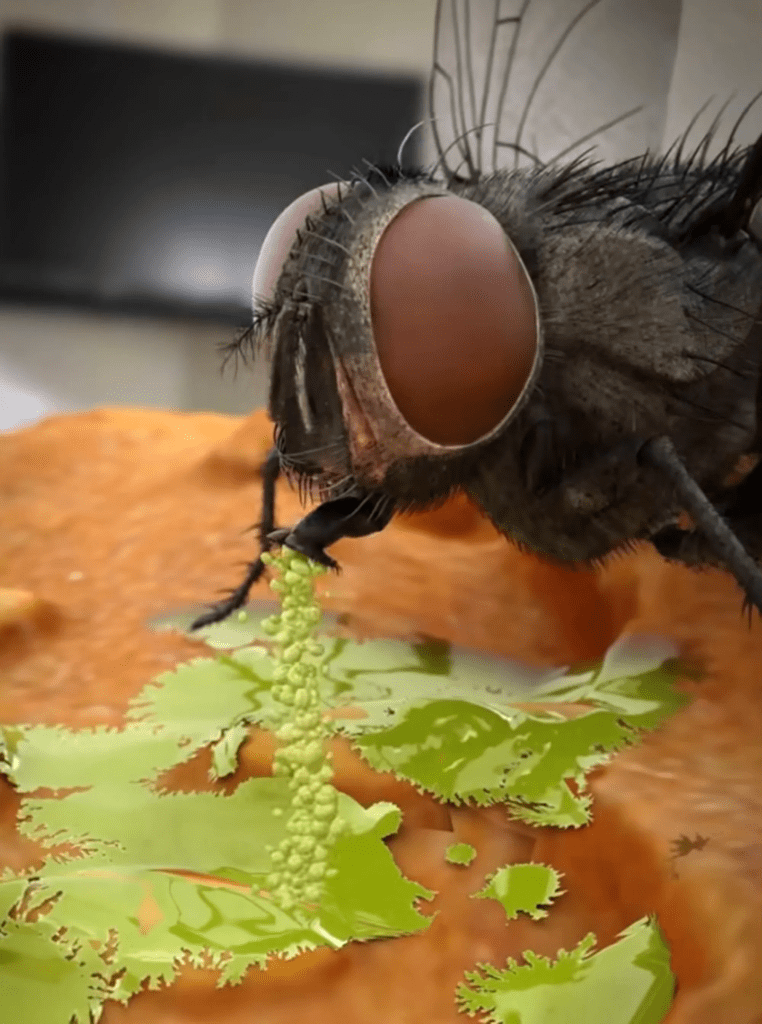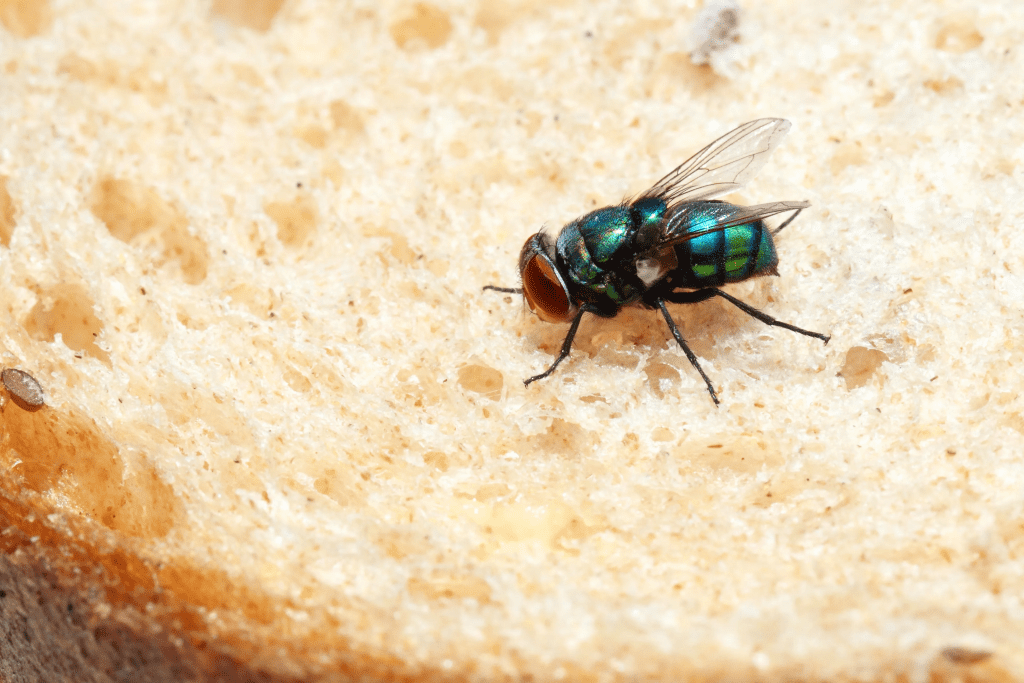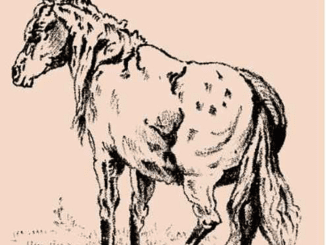Flies might seem like harmless nuisances buzzing around your plate, but their presence on your food is far more unsettling than you might imagine. A simulation shared by YouTuber Zack D. Films has left viewers horrified, revealing the stomach-churning truth about what really happens when a fly lands on your meal. Let’s uncover the unsettling details and why you might want to think twice before taking another bite.
What Happens When a Fly Lands on Your Food?

It’s easy to dismiss flies as mere pests, but their eating habits are downright disgusting. Unlike humans, flies don’t have teeth, so they can’t chew food. Instead, they rely on a unique—and nauseating—method to consume their meals.
When a fly lands on solid food, it releases saliva filled with digestive enzymes onto the surface. This saliva breaks down the food into a liquid-like substance that the fly can easily suck up with its sponge-like mouthparts. Yes, you read that right—flies essentially vomit on your food to make it edible for themselves.
Why Fly Vomit Is More Than Just Gross
If the idea of fly vomit isn’t enough to make your stomach churn, consider what it contains. Flies are notorious for frequenting some of the filthiest places imaginable, like garbage bins, animal feces, and decaying matter. When they land on your food, they’re not just bringing digestive enzymes—they’re also likely transferring bacteria, viruses, and other harmful microorganisms they’ve picked up along the way.
This process, often invisible to the naked eye, transforms your food into a microbial hotspot, potentially exposing you to pathogens that can cause foodborne illnesses.
Social Media Reacts: A Collective “Ew”
The viral simulation by Zack D. Films has sparked widespread disgust across social media platforms. Many viewers were left horrified, with comments ranging from “New fear unlocked: invisible fly vomit all over your food” to “That’s why mom said, ‘Don’t eat the food after a fly lands on it.’ Now it’s clearer.”
One Reddit user even admitted that the video had permanently changed their perspective: “I want to let you all know, since I saw this clip three months ago, my life has not been the same. I now hate flies and will never eat food touched by a fly again.”
Of course, not everyone was fazed. One commenter shrugged off the revelation, stating, “5-second rule applies. I’m still eating it.”
The Double Gross Factor: Tastebuds on Their Feet
As if the vomiting wasn’t bad enough, flies also taste your food before they even start eating it. According to pest control experts at Western Exterminator, flies have taste receptors (called chemosensilla) located on their feet. This means that the moment they land on your plate, they’re not only sampling the flavors but also potentially contaminating your meal with whatever germs they’ve carried.
The Risk of Eggs and Maggots
Flies don’t stop at vomiting and tasting—they might also leave behind a little surprise. Under the right conditions, flies can lay eggs on your food, which may hatch into maggots in less than 24 hours. According to pest control specialists at Ehrlich, this is more than just unpleasant; it’s a clear sign that the food is no longer safe to eat.

Imagine biting into a meal only to realize it’s teeming with maggots. That’s a nightmare nobody wants to experience, and it’s yet another reason to be vigilant when flies come near your plate.
Flies as Carriers of Disease
Flies are more than annoying; they’re also dangerous. These pests are known carriers of diseases such as salmonella, E. coli, and cholera. When they land on your food, they transfer these pathogens through their saliva, feces, or the tiny hairs covering their bodies.
Even a brief landing can be enough to contaminate your meal. And while the risk may vary depending on the fly and the food, the potential health implications are worth considering.
How to Protect Your Food from Flies
Now that you know the unsettling truth about flies, it’s time to take steps to protect your food. Here are a few practical tips to keep these pests at bay:
- Cover Your Food: Use lids, foil, or mesh covers to shield your meals from unwanted visitors.
- Clean Eating Areas: Regularly wipe down surfaces to remove food residue that might attract flies.
- Use Natural Deterrents: Flies dislike certain scents, such as lavender, mint, and basil. Placing these herbs near your dining area can help repel them.
- Invest in Fly Traps: Whether homemade or store-bought, fly traps can significantly reduce the number of pests in your home.
- Act Quickly: If you spot a fly near your food, shoo it away immediately and inspect your meal before eating.
Is It Ever Safe to Eat Food Touched by a Fly?

While some people might argue that the “5-second rule” applies, the reality is more complicated. The risk depends on where the fly has been and how long it lingers on your food. If a fly lands on your meal and you’re unsure about its cleanliness, it’s better to err on the side of caution.
Remember, even if the food looks fine, it could be harboring invisible bacteria or viruses. If you’re particularly squeamish—or health-conscious—discarding the food might be the safest option.
Conclusion: Flies Are More Than Just Annoying
The next time a fly lands on your food, think twice before brushing it off and taking a bite. These tiny pests bring more than just annoyance to the table—they also bring germs, vomit, and the potential for maggots. While some people may shrug off the risk, understanding what really happens during that brief encounter can help you make more informed choices.
So, grab that fly swatter and keep your food covered. After all, a little vigilance goes a long way in maintaining your health and peace of mind.


